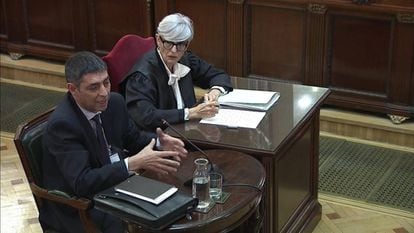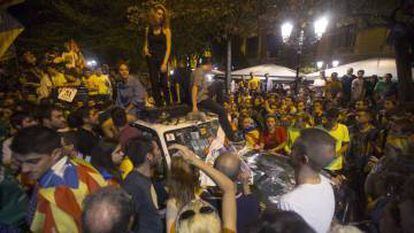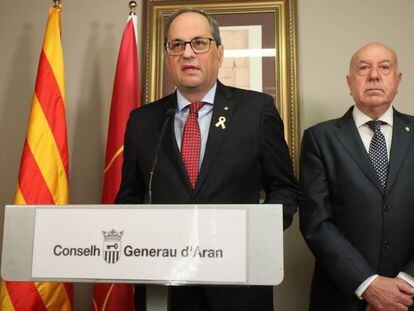Ex-Catalan police chief tries to play down role of force in secessionist drive
Josep Lluís Trapero, the head of the Mossos d’Esquadra during the illegal 2017 independence referendum, distances himself from the regional government in his Supreme Court testimony

The man who was in charge of the Catalan police when the regional government held an unauthorized independence referendum on October 1, 2017 has played down the force’s responsibility in the events of that day.
Josep Lluís Trapero, the then-chief of the Mossos d’Esquadra, gave testimony on Thursday at the Supreme Court, where a high-profile trial of 12 separatist leaders is underway. Members of the former Catalan government and civil society leaders are facing charges that include rebellion, sedition, disobedience and misuse of public funds in connection with the illegal referendum and unilateral independence declaration that followed.
The reason why she was offered another way out is not that the front door was deemed unsafe
Josep Lluis Trapero
Speaking in court, Trapero replied to criticism from other witnesses, including high-ranking officers of the National Police and the Civil Guard. The Mossos have been accused of foot-dragging on referendum day, and of failing to do their part to enforce a court order to stop the vote from taking place. Images of National Police and Civil Guard officers restraining would-be voters at polling stations on October 1, 2017 made headlines the world over.
According to Trapero, at a meeting of representatives from all three law enforcement agencies it was agreed that two Mossos officers would show up at every polling station early on October 1, and that they would call the National Police and Civil Guard to request reinforcements if necessary. The Mossos were only “one part” of an operation in which the bulk of the officers was being provided by the other two agencies, he noted.
Trapero testified as a witness at the Supreme Court, where he answered all the prosecution’s questions even though he could have refused to make statements, as he is himself facing rebellion charges at Spain’s High Court, the Audiencia Nacional.

The former head of the regional police force also sought to distance himself from the government headed by then-premier Carles Puigdemont. Trapero admitted that he sent his superior, the Catalan interior affairs chief, Joaquim Forn, copies of court investigations and reports, a fact that prosecutors claim is proof of connivance with the executive and its plans for secession. But Trapero said that this had always been the working method.
However, the former chief of police made a point of distancing himself from “the political drift” that the Puigdemont administration was embarking on, and admitted that he did “not feel comfortable” when the former premier opted for the unilateral path toward secession from the rest of Spain.
As for his political boss at the time, Forn, Trapero blamed him for “a certain degree of irresponsibility” when the former stated in public on the day that he was sworn into office, in July 2017, that the Mossos would obey the law and allow people to vote on October 1.
Trapero said did “not feel comfortable” when Puigdemot opted for the unilateral path
The legal representative for the far-right party Vox, which is involved in the Supreme Court proceedings as the private prosecution, asked Trapero about the events of September 20, 2017, when a large crowd congregated around the Barcelona building that houses the regional economic affairs department to protest a police raid going on inside.
This day is crucial to the prosecution’s claim that violence was employed or abetted by the defendants, as the rebellion charge can only be upheld if there were proven violent acts. Patrol cars were vandalized by the crowd, and a court official who participated in the search has told the court that she was too scared to walk out of the front door because of the protesters’ menacing attitude. This witness said that she phoned a judge to tell him to “get me out of here,” and the judge then telephoned Trapero to demand an immediate solution. The court official eventually left through an adjoining theater after accessing the rooftop.
“The reason why she was offered another way out is not that [the front door] was deemed unsafe. When I got the call from the judge, at 11 or 11.15pm, the police cordon had been ended because we had contradictory information suggesting that the operation inside was being delayed,” said Trapero in court. “When I talked to the judge, it was the first news I had that the operation was over.”
“I asked for the court clerk to be offered the alternative exit. It was a matter of saving ourselves the time it would have taken to set up the cordon again. That’s the reason why she was offered an alternative way out.”
English version by Susana Urra.












































